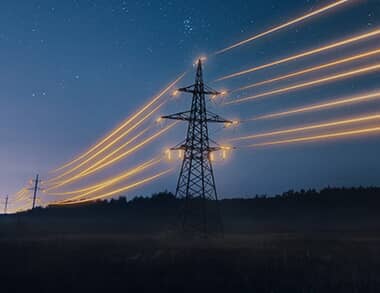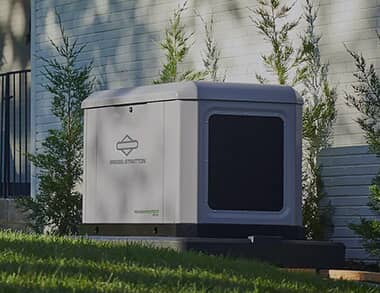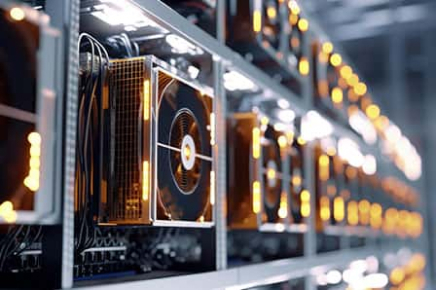Using a Thermal Imaging Camera to Inspect Your Generator

Thermography helps you see what you can't see with the naked eye. It detects heat patterns that can alert you to potential problems before they can cause costly breakdowns and expensive downtime. Knowing how to properly use thermal imaging cameras and read the data they provide can help protect both your employees and your budget from harm. As you prepare to utilize your thermal imaging camera to test your generator systems, the following simple tips can help you stay safe and obtain accurate results.
Software glitches can lead to inaccurate results. Always ensure that the camera is updated with the latest firmware before you use it to inspect your generator.
NFPA 70E (1) is not something you want to ignore. Individuals performing the thermal imaging test should use the proper protective equipment when conducting the analysis. This equipment must include flame resistant clothing and leather work boots. You must also wear gloves and an arc flash rated face shield. And don't forget to wear a helmet and hearing protection.
Obtaining accurate results through thermography requires the system operates at no greater than 40% of the nominal load. Always check to ensure the generator is not above this level when performing the tests.
Different materials have different emissivity, and accurate readings depend on accurately inputting this information into the thermal imaging camera. Before testing, make sure that the correct values for steel, stainless steel, aluminum, copper, plastic, ceramic, rubber, etc. are entered into the camera.
Take regular photos and thermal pictures using the thermal imaging camera. Make notes on these photos that identify the temperatures and potential problems you suspect. Having both images can make it easier for the repair technician to correct the problem.
It can be difficult to aim your thermal imaging camera from a distance. For this reason, most newer models have zoom features and laser pointers. Use these features when aiming at small connections. This will help ensure the accuracy of your results.
You should follow the path of higher temperatures. When you find a circuit with a higher temperature, trace the route into the branches and loads to help you zero in on the source of the problem.
A clean camera is an accurate camera. Make sure to use warm water and a heavily diluted detergent solution to clean the camera body. You will also want to wipe the lens down with a soft cloth and a commercial cleaning liquid that contains 30% isopropyl alcohol or one that contains 96% ethyl alcohol.
Our experienced generator technicians take a proactive approach to generator maintenance and troubleshooting. To set up an inspection, contact Gen-Tech Power Generation Specialists at (800) 625-8324. It is our pleasure to answer your questions and help you understand how we use thermal cameras to keep your generators operating at optimal performance levels.
Update the Camera Before Operation
Software glitches can lead to inaccurate results. Always ensure that the camera is updated with the latest firmware before you use it to inspect your generator.
Wear the Appropriate Safety Equipment
NFPA 70E (1) is not something you want to ignore. Individuals performing the thermal imaging test should use the proper protective equipment when conducting the analysis. This equipment must include flame resistant clothing and leather work boots. You must also wear gloves and an arc flash rated face shield. And don't forget to wear a helmet and hearing protection.
Check the Nominal Load
Obtaining accurate results through thermography requires the system operates at no greater than 40% of the nominal load. Always check to ensure the generator is not above this level when performing the tests.
Set Emissivity as a Custom Value
Different materials have different emissivity, and accurate readings depend on accurately inputting this information into the thermal imaging camera. Before testing, make sure that the correct values for steel, stainless steel, aluminum, copper, plastic, ceramic, rubber, etc. are entered into the camera.
Take Both Regular and Thermal Pictures
Take regular photos and thermal pictures using the thermal imaging camera. Make notes on these photos that identify the temperatures and potential problems you suspect. Having both images can make it easier for the repair technician to correct the problem.
Use the Zoom and Laser Pointers
It can be difficult to aim your thermal imaging camera from a distance. For this reason, most newer models have zoom features and laser pointers. Use these features when aiming at small connections. This will help ensure the accuracy of your results.
Follow the Path of Problems
You should follow the path of higher temperatures. When you find a circuit with a higher temperature, trace the route into the branches and loads to help you zero in on the source of the problem.
Clean the Camera After Use
A clean camera is an accurate camera. Make sure to use warm water and a heavily diluted detergent solution to clean the camera body. You will also want to wipe the lens down with a soft cloth and a commercial cleaning liquid that contains 30% isopropyl alcohol or one that contains 96% ethyl alcohol.
Our experienced generator technicians take a proactive approach to generator maintenance and troubleshooting. To set up an inspection, contact Gen-Tech Power Generation Specialists at (800) 625-8324. It is our pleasure to answer your questions and help you understand how we use thermal cameras to keep your generators operating at optimal performance levels.
Topics:
From Insights to Power: Let’s Talk Solutions
Whether you need emergency power, maintenance, or expert guidance on your generator system, Gen-Tech has you covered. Our experienced team provides industry-leading service to keep your power running when it matters most. Call (800) 625-8324 to discuss your power generation needs today!
Contact Us













